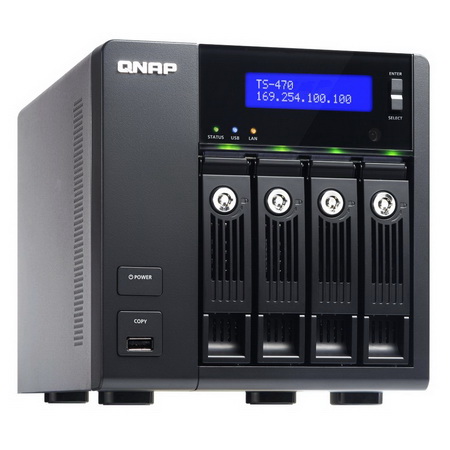INTRODUCTION

Up until roughly 5 years ago whenever i needed to download large chunks of data from the internet i had to use my HTPC system which naturally consumed a lot less power than my Intel Core i7 systems. Still even that used almost 90W at idle and although compared to my other systems this was nothing having it turned on almost 24/7 was not really good for my wallet. That all changed however when i received my very first NAS server and i haven't looked back ever since. True NAS Servers can't do everything a small PC can right from the box but currently these little devices can do most of what a PC can without however taking up the same space while at the same time their electrical requirements are many times less something that concerns many people especially those who use such devices nonstop for long periods of time. For the past two weeks we've been putting through rigorous testing yet another NAS Server by our friends over at QNAP and more specifically their latest and quite powerful TurboNAS TS-470.
QNAP Systems, Inc., as its brand promise "Quality Network Appliance Provider", aims to deliver comprehensive offerings of cutting edge network attached storage (NAS) and network video recorder (NVR) solutions featured with ease-of-use, robust operation, large storage capacity, and trustworthy reliability. QNAP integrates technologies and designs to bring forth quality products that effectively improve business efficiency on file sharing, virtualization applications, storage management and surveillance in the business environments, as well as enrich entertainment life for home users with the offering of a fun multimedia center experience. Headquartered in Taipei, QNAP delivers its solutions to the global market with nonstop innovation and passion.
The TurboNAS TS-470 is the most powerful NAS Server we've ever received (to date at least) and since alongside with it QNAP also released a few models featuring the Intel Core i3 CPU i think that things might be changing for NAS Servers, for the best that is. You see up until this day at around the same price category one could only find NAS Server models based on the Intel Atom CPU (many still do) and although even that is a long way from the Marvel based solutions a while back still it was nowhere close to what even a Celeron CPU could do. That being said the TS-470 may not feature the extremely powerful Core i3 CPU (extremely powerful for such a device) but it does feature an very powerful Celeron Dual Core CPU (model G550) running at 2.6GHz (the OpenGL 3.0 compatible Intel(R) Sandy Bridge Desktop MESA DRI version 9.0 takes care of the graphics part) and has 2GB DDR3 RAM paired with 512MB of flash memory. The TurboNAS TS-470 is also amongst the very few NAS Servers currently in the market with optional 10GbE (Gigabit Ethernet) support simply by replacing the dual port GbE PCIe adapter it already wears. Overall the TS-470 packs a large number of unique features and specifications so the time has come to see how all of those translate in performance.

 O-Sense
O-Sense







.png)

